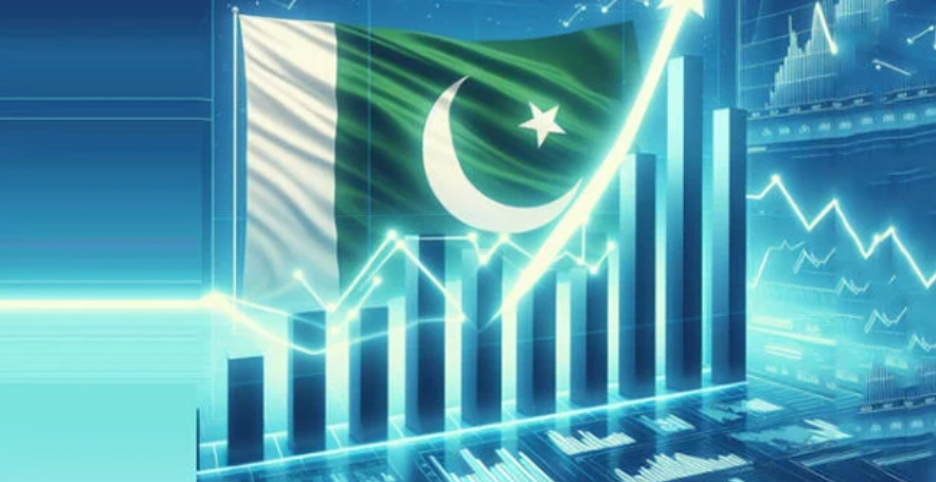Despite efforts by the Special Investment Facilitation Council (SIFC), Pakistan’s investment ratio fell to just 13.1% of the size of the economy in the previous fiscal year, the lowest level in 50 years, according to numbers certified by the National Accounts Committee (NAC).
This 50-year low ratio of investment to GDP (gross domestic product) confirms concerns that the SIFC by itself will not be able to significantly increase investment unless Pakistan’s economy and political stability are achieved.
The population estimate provided by the Pakistan Bureau of Statistics (PBS) in the National Accounts that were authorized the day before was similarly disparate, according to official data. Due to this disparity, the per capita income for the final fiscal year was inflated by $1,674 per person. The country’s population was 241.5 million in 2023, according to the results of the population census; however, the PBS utilized an outdated estimate of 236 million.
The interim National Accounts estimates show that Pakistan’s economy’s share of savings and investments has continued to fall short of the official goals for the final fiscal year. The crises in the external sector are a result of such low ratios of savings to investments.
The investment-to-GDP ratio in the final fiscal year was 13.1%, below the objective of 15.1%. In the last 50 years, this ratio is the lowest. When the investment-to-GDP ratio was previously this low, 13.2% of GDP was invested in the fiscal year 1973–74.
By a parliamentary act, the government of the Pakistan Democratic Movement (PDM) created the SIFC with the goal of increasing the nation’s low investment and removing obstacles to economic expansion. The military and civilians work together to manage the SIFC. It has spent the last year making a lot of efforts. These initiatives haven’t, however, yet produced noticeable outcomes.
According to sources, the International Monetary Fund (IMF) has asked Pakistan about the amount of investment it anticipates making in the current and upcoming fiscal years during ongoing negotiations.
Thus far, the SIFC has been successful in eliminating procedural obstacles and resolving problems with coordination between the federal and local administrations. But neither domestic nor international investment has significantly increased as a result of these initiatives.
The investment-to-GDP ratio of 13.1% is far lower than that of counterparts in the region. It was 14.1% at this same time last year.
Although Saudi Arabia has promised to invest up to $5 billion in Pakistan, these promises have not yet materialized into agreements.
Additionally, the fixed investment-to-GDP ratio decreased from 12.4% to 11.4% from the previous year. In this fiscal year, private sector investment fell to 8.7% of GDP, the lowest level in nearly 25 years.
The ratio of public sector investment to GDP fell to 2.8%, the lowest point in the previous four years. Fiscal limitations have impacted public investment, as seen by the Ministry of Finance’s refusal to release the whole Rs950 billion budget.
Investment in manufacturing has decreased as a result of frequent changes to tax laws and prejudices against the manufacturing industry. The nation’s productivity is declining, and consumption—which accounted for almost 88% of the expansion in the size of the economy—is the main driver of economic growth.
The government’s ability to solve problems with the social sector and aging infrastructure with its own resources has been hampered by the inability to meet the critical investment objective, which has raised the need for financing for development projects.
One major economic failing of the government is its inability to raise investment as a share of the national economy, which suggests that fundamental imbalances are not being addressed.
This fiscal year, the savings-to-GDP ratio fell short of the declared objective and decreased slightly from 13.1% to 13%.
GDP magnitude
The national economy is expected to be worth $373.6 billion in the current fiscal year, up from $338.2 billion in the last one. Because of a stable exchange rate, the economy grew by 10.5% in dollar terms over the previous fiscal year. It is still smaller than the $375.6 billion amount from two years ago, though, as a result of further devaluations.
In 2023–2024, the economy had a value of Rs106 trillion in rupees.
This year, the per capita income climbed to $1,674 from an expected $1,551 in the previous fiscal year, a rise of $123 or 8% per person. On the other hand, the anticipated per capita income is based on a population of 236 million.
Two years ago, there were 241.5 million people living in Pakistan, according to the most recent population census. It should have reached 248 million by now if growth had been 2.6% each year on average. The inaccurate use of population estimates would result in an approximate $90 overestimation of the per capita income.
Dr. Naeemuzafar, PBS’s head statistician, remained silent when asked about the use of the outdated demographic data.
I am a dedicated student currently in my seventh semester, pursuing a degree in International Relations. Alongside my academic pursuits, I am actively engaged in the professional field as a content writer at the Rangeinn website.







